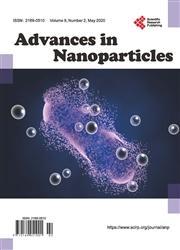Interaction of Immune System Protein with PEGylated and Un-PEGylated Polymeric Nanoparticles
引用次数: 7
Abstract
Biodegradable Nanoparticles (NPs) are under intense investigation due to their potential application in targeted drug delivery. Upon their entry to the biological system, they encounter the immune system, which limits their availability at the intended site. Most importantly, the innate immune system is the one that acts as the first line of defense against foreign materials. It can be activated by collectin proteins which recognize the structural pattern of polysaccharide on the surface of microorganisms. NPs may interact with these proteins in a similar way, and the interaction may lead to beneficial outcomes in vaccine delivery. On the other hand, in targeted drug delivery, it is desirable for the NPs not to be recognized as foreign material as this may lead to their fast elimination from the system through mechanism such as opsonization. We investigated the interaction of PEGylated and un-PEGylated PLGA NPs with Recombinant Human Mannose-Binding Protein (HMBP) in an effort to understand the effect of surface modification on their binding to the protein. Results show that both PLGA-COOH and PLGA-PEG-NH2 bind to HMBP as studied using dynamic light scattering (DLS), fluoresce and UV-vis spectroscopy. However, their binding is shown to have different effect on the structure of the protein. Study done using fluorescence spectroscopy displayed a decrease in fluorescence emission of the protein upon binding to PLGA-COOH. On the other hand the fluorescence emission of the protein increased upon binding to the PLGA-PEG-NH2 indicating conformational changes in the protein structure.免疫系统蛋白与聚乙二醇化和非聚乙二醇化纳米聚合物的相互作用
可生物降解纳米颗粒(NP)由于其在靶向药物递送中的潜在应用而受到密切研究。当它们进入生物系统时,会遇到免疫系统,这限制了它们在预定部位的可用性。最重要的是,先天免疫系统是抵御外来物质的第一道防线。它可以被识别微生物表面多糖结构模式的凝集素蛋白激活。NP可能以类似的方式与这些蛋白质相互作用,这种相互作用可能导致疫苗递送的有益结果。另一方面,在靶向药物递送中,希望NP不被识别为异物,因为这可能导致它们通过调理等机制从系统中快速消除。我们研究了聚乙二醇化和非聚乙二醇化PLGA NP与重组人甘露糖结合蛋白(HMBP)的相互作用,以了解表面修饰对其与蛋白质结合的影响。结果表明,PLGA-COOH和PLGA-PEG-NH2都与HMBP结合,如使用动态光散射(DLS)、荧光和UV-vis光谱所研究的。然而,它们的结合被证明对蛋白质的结构有不同的影响。使用荧光光谱进行的研究显示,在与PLGA-COOH结合时,蛋白质的荧光发射降低。另一方面,蛋白质的荧光发射在与PLGA-PEG-NH2结合时增加,表明蛋白质结构的构象变化。
本文章由计算机程序翻译,如有差异,请以英文原文为准。
求助全文
约1分钟内获得全文
求助全文

 求助内容:
求助内容: 应助结果提醒方式:
应助结果提醒方式:


